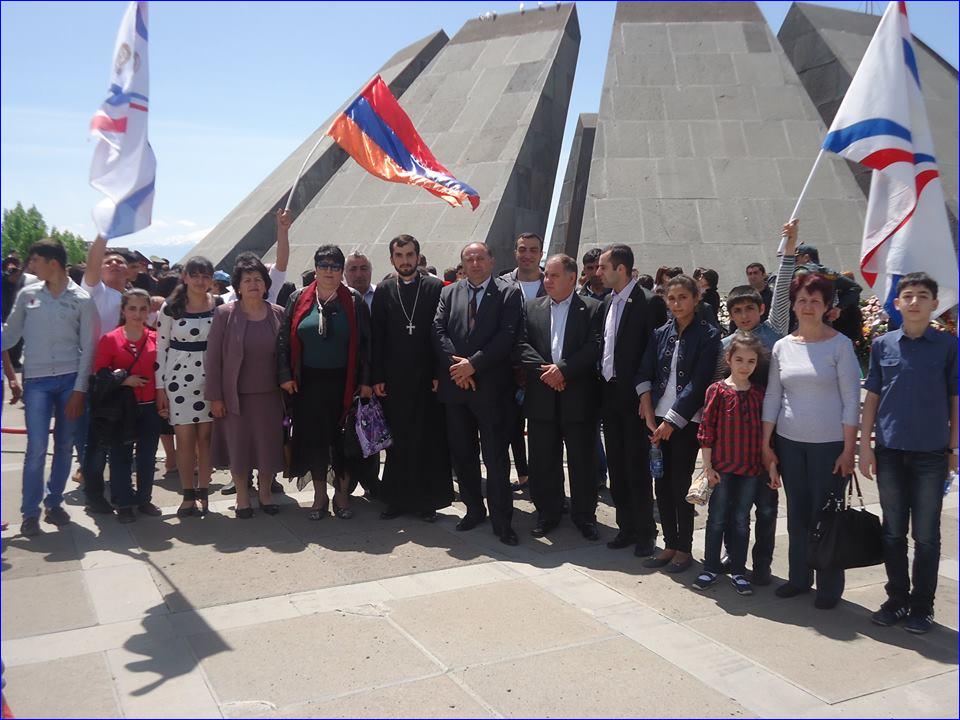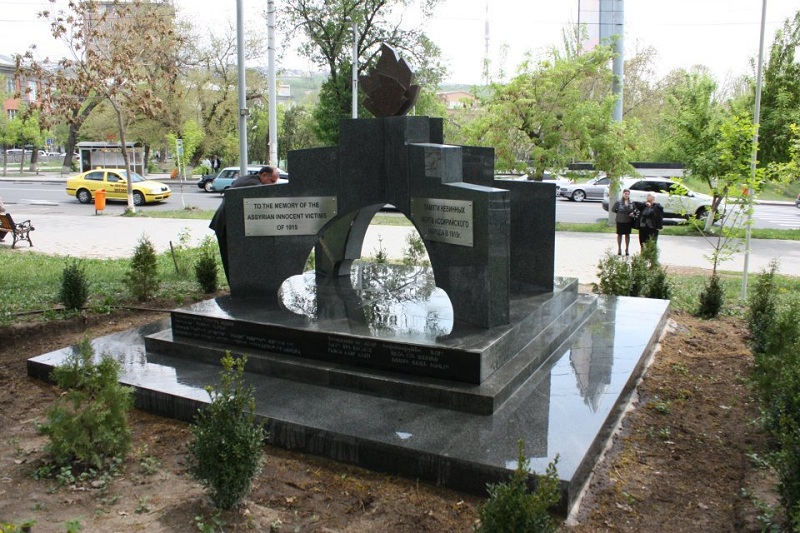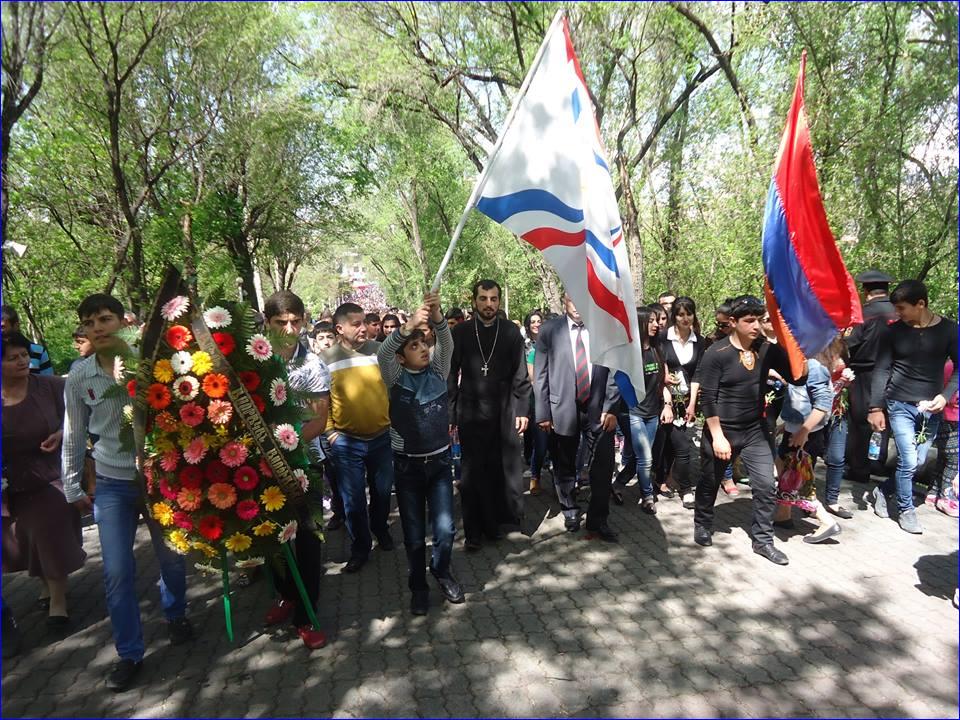


Dr. Eran Gunduz, the Turkish representative from the German Association for the Recognition of the Genocide visited the Assyrian genocide monument in Yerevan, the capital of Armenia. He laid flowers at the monument and honored the memory of the Assyrian people with a minute of silence. Dr. Gunduz said he planned in advance that today after visiting the Armenian genocide memorial complex he would pay respects to the Assyrian victims who were subjected to genocide in the Ottoman Empire during World War I.
"I hope one of these days the Republic of Turkey will recognize this historical injustice and will accept its guilt," he said.
The Turkish genocide of Assyrians, Greeks and Armenians occurred between 1915 and 1918, and claimed the lives of 750,000 Assyrians (75%), 1.5 million Armenians and 500,000 Pontic Greeks. It was a genocide designed to exterminate Christians and it nearly succeeded. Today Turkey is 99% Muslim. In the 1820s 40% of its population was non-Muslim, mostly Assyrians, Armenians, Greeks and some Jews. In 1915 the non-Muslim population had declined to 19%. In 1918 it had declined to less than 1% directly as a result of the genocide.

That the genocide occurred is beyond dispute. The evidence comes from multiple sources. The genocide was recorded by Arnold Toynbee, famed British historian, as well as countless American and German missionaries. Toynbee's document runs for more than 600 pages and is entitled, "Arnold Toynbee Papers and Documents on the Treatment of Armenians and Assyrian Christians by the Turks, 1915-1916, in the Ottoman Empire and North-West Persia." The national archives of the British, French and American states contain a large collection of documents related to the genocide. The Diplomatic French archives, for example, included 45 volumes on the Assyrian question from 1915 to 1940.


or register to post a comment.